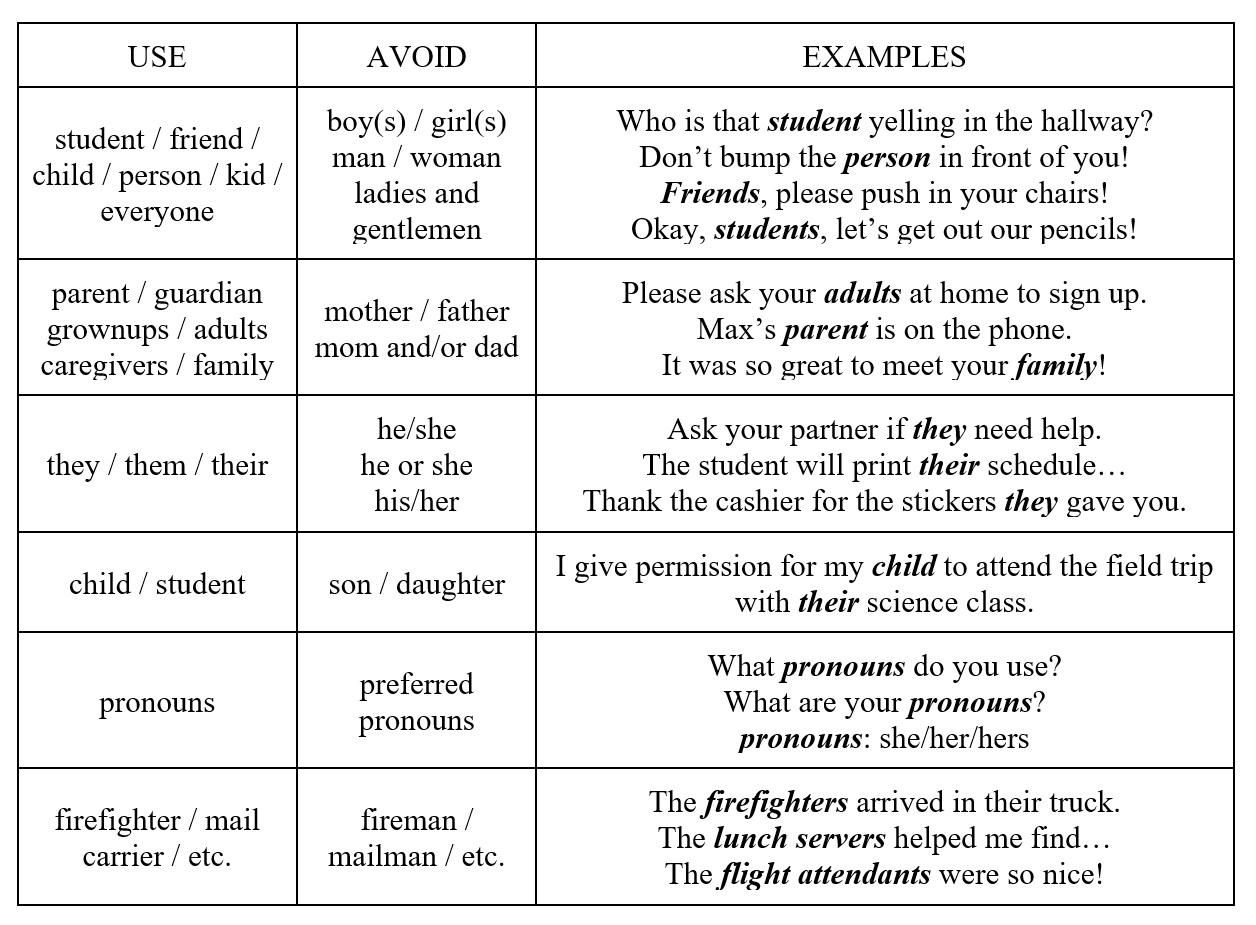
3 minute read
Building Inclusivity
Making our Language and Communities More Inclusive Part 2: Building an Action Plan
by Anne-Marie Sklarwitz, SEL Coordination and Remote Student Support, Westwood HighSchool
Part 1 of this series addressed some misconceptions about gender, common practices that are accidentally harmful, and suggestions for a better understanding of sex assigned at birth, gender identity and expression, and pronoun usage. Here, in Part 2, are some actions to create a more inclusive environment.
Words Matter
A person’s gender identity and pronoun usage might not line up with society’s rigid norms about gender expression. We must retrain ourselves to stop making assumptions about gender and pronouns based on things like name, clothing, hairstyle, voice, or mannerisms. Language choices signal inclusivity and you can practice during everyday interactions. See the table below for word replacement examples to avoid binary and gendered terms.
Materials
It is important to check forms, paperwork, and websites. Schools have been updating “mother/father” to say “parent/ guardian” which is inclusive of different types of families and living situations, and also leaves room for nonbinary people. See the table for other important changes. Include your own pronouns in your email signature and Zoom display name to normalize pronoun disclosure without requiring students to out themselves. Ask for students’ pronouns on beginning of year surveys and again periodically; pronoun usage can be fluid and/or change over time. Avoid “preferred” when discussing pronouns, which implies that you might choose to use other pronouns if it is easier or makes you more comfortable.
Building Culture and Structure
As student advocates, we must work at a systemic level. Do all students graduate in one color gown, or are boys assigned one color and girls another? Which color do nonbinary students wear? What about trans students, potentially at risk of being outed to unaccepting family members? At homecoming and prom events, are there binary categories like king/queen, or fashion shows where boys must wear tuxedos and girls must wear gowns? What about yearbooks and superlatives? In working with colleagues across academic departments, focus on representation of LGBTQ+ people to provide mirrors for students to see themselves and windows to see others. Collaborate specifically with Biology and Wellness teachers and take advantage of the Resource Links from Expand Your Classroom to ensure that trans and nonbinary identities are represented and to avoid harmful erasure and/ or misinformation equating anatomy, hormones, and genetics with gender. Post rainbow pride stickers and Gender Unicorn posters for representation and education. Bathroom accessibility affects trans and nonbinary students multiple times per day. Students are legally able to use bathrooms that align with their gender identities. However, it is important to also consider quantity and location of all-gender bathrooms for any trans and nonbinary students who feel safer there instead.
Intervention Strategies
Staying silent when we hear homophobic or transphobic remarks implies approval. We must be particularly mindful of heteronormative and cisnormative remarks, which we--and others--might accidentally say and might sound “normal,” but are actually harmful. Heteronormativity is the presumption that everyone is straight or that male/female attractions and relationships are the norm and therefore superior; it is the belief that everyone is or should be straight. Cisnormativity is the presumption that one’s gender identity and expression fit society’s rigid and binary constructions and expectations of what it means to be a girl/woman or boy/man. When you need to intervene, it is okay to acknowledge the issue and signal that you will address it later. This gives you time to formulate a response while ensuring that anyone present understands that you are not ignoring the issue. Practice saying things that you feel comfortable with, are authentic to your role/persona/position, educate students, make students feel seen and valued, and maintain your personal safety.
We don’t always know who is LGBTQ+ or who has LGBTQ+ family. It is often the most vulnerable students who are not out to us or their peers; these students need to see and hear us being inclusive, as do their straight and cisgender peers.








